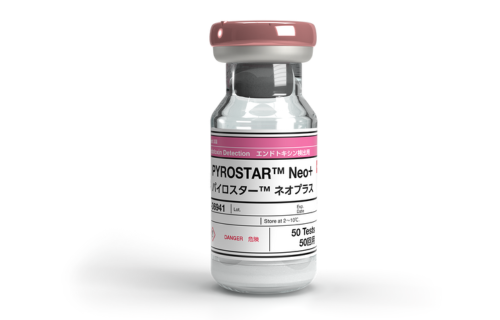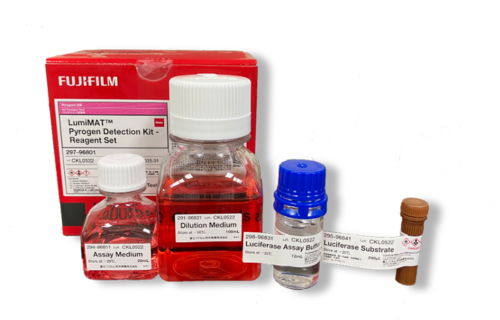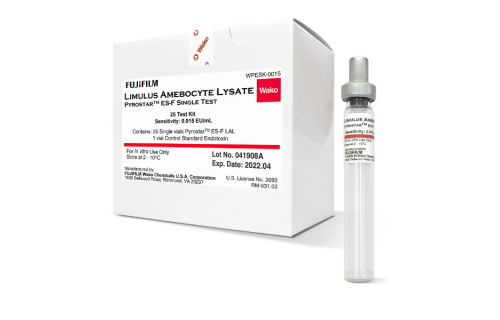Comparison Of Endotoxin/LPS To Other Common Pyrogens
Pyrogens are microbial components or chemical compounds that, when administered in very small quantities via the parenteral route, trigger an inflammatory response that results in an increase in body temperature in humans or test animals. The regulations regarding pyrogen testing address the considerable health risks associated with their presence in dialysis fluids, parenteral drugs, bio-pharmaceuticals, cosmetics, and solid medical devices[1].
Types of Pyrogens
Endogenous and Exogenous are the two broad classifications of pyrogens. Endogenous pyrogens, such as interleukins and tumor necrotic factor (TNF), are produced by the human body. Exogenous pyrogens are derived from foreign particles like microorganisms and chemicals contaminating packaging material and culture media.[1]
Pyrogens can originate from microbes, like endotoxin lipopolysaccharides (LPS), exotoxins, peptidoglycan, and lipoteichoic acid (LTA), or from non-microbial sources, like endogenous pyrogens and non-living substances.
Endotoxins, derived from both dead and living Gram-negative bacteria, are the most potent and well-characterized pyrogens. Gram-positive bacteria, known for containing LTA, also contribute to the production of pyrogens.[2]
Peptidoglycan, exotoxins, fungal products, viruses, parasites, and contaminated packaging materials are other pyrogenic substances. Inflammatory reactions and fever development are well characterized by the role of endogenous pyrogens and non-microbial exogenous pyrogens. [1]
Exogenous pyrogens
Endotoxin or LPS
Most Gram-negative bacteria have LPS as a vital part of their outer membrane. Their stability against heat and pH changes is exceptional. Bacteria can survive without LPS, but it plays a crucial role in their virulence by interacting with cell surface receptors and initiating signalling pathways.[1]
Lipoteichoic Acid (LTA)
The components of the Gram-positive cell wall, which does not contain endotoxin, are recognized as triggers for cytokine release in human monocytes/macrophages. LTA is a pyrogenic compound located on the surface of Gram-positive bacterial cell walls. Similar to endotoxin, LTA has strong pyrogenic properties and poses significant health risks, as seen through inflammatory reactions, septic shock, and organ failure in the human body.[1]
Peptidoglycan (PG)
The murein layer, also called PG, is a common component of the cell wall in most bacteria (excluding mycoplasma), with much higher concentrations in Gram-positive bacteria compared to Gram-negative bacteria.
Research has shown that the presence of PG in healthcare products, particularly dialysis fluids, leads to pyrogenic effects, as evidenced by the release of IL-1, TNF-, and IL-6 in MAT assays. In comparison to endotoxin, PG is a weaker pyrogen.[1]
Endogenous pyrogen
According to physiologists and molecular researchers, it was highly unlikely that exogenous pyrogens could directly impact the brain's thermoregulatory center, resulting in fever. Additional investigation led to the identification of endogenous pyrogens, also known as granulocytic or leukocytic pyrogens.
Healthcare products typically do not contain endogenous pyrogens, as these are only produced by specific white blood cells in response to certain toxins and external pyrogens. Cytokines such as interleukin 1 (IL-1), TNF- (cachectin), and IL-6 are examples of endogenous pyrogens.[1, 3]
Pyrogen testing
The mandatory testing for pyrogen presence is essential in order to prevent any severe adverse reactions that could occur with the release of clinical and health applications. Among the various pyrogen tests available, the Bacterial Endotoxin Test (BET) using Limulus Amebocyte Lysate (LAL) is the most widely used. It was developed to replace the Rabbit Pyrogen Test (RPT).
The LAL assay effectively identifies endotoxin pyrogens, but it is unable to detect non-endotoxin pyrogens. To address this limitation, researchers are exploring a more efficient in-vitro Monocyte Activation Test (MAT) as an alternative to the LAL assay. MAT has the ability to detect both endotoxin and non-endotoxin pyrogens, providing comprehensive testing.[1, 4]
FUJIFILM Wako provides LAL reagents, both natural and synthetic, to conduct the Bacterial Endotoxin Test, in the form of the PYROSTAR™ ES-F, Limulus Color-KY, and PYROSTAR™ Neo+ assays.
FUJIFILM Wako also produces a MAT derived test, known as LumiMAT™, that uses a luminescence reporter to provide stable, rapid, MAT results of both endotoxin and non-endotoxin pyrogens concentrations.
References
- Singh, N., et al., Microbial and Non-microbial Pyrogens in Healthcare Products: Risks, Quality Control and Regulatory Aspects. Applied Clinical Research, Clinical Trials and Regulatory Affairs, 2016. 03: p. 1-1.
- Raetz, C.R. and C. Whitfield, Lipopolysaccharide endotoxins. Annu Rev Biochem, 2002. 71: p. 635-700.
- Dinarello, C.A., The history of fever, leukocytic pyrogen and interleukin-1. Temperature (Austin), 2015. 2(1): p. 8-16.
- Perdomo-Morales, R., et al., Monocyte activation test (MAT) reliably detects pyrogens in parenteral formulations of human serum albumin. Altex, 2011. 28(3): p. 227-35.






